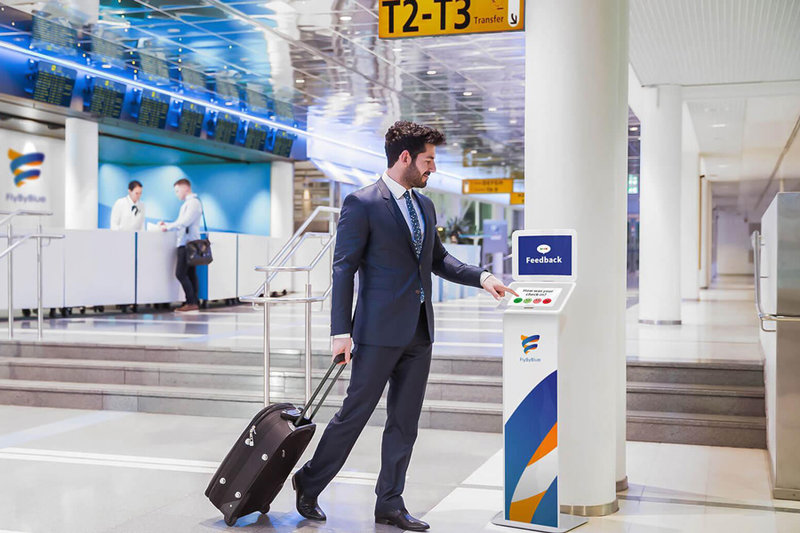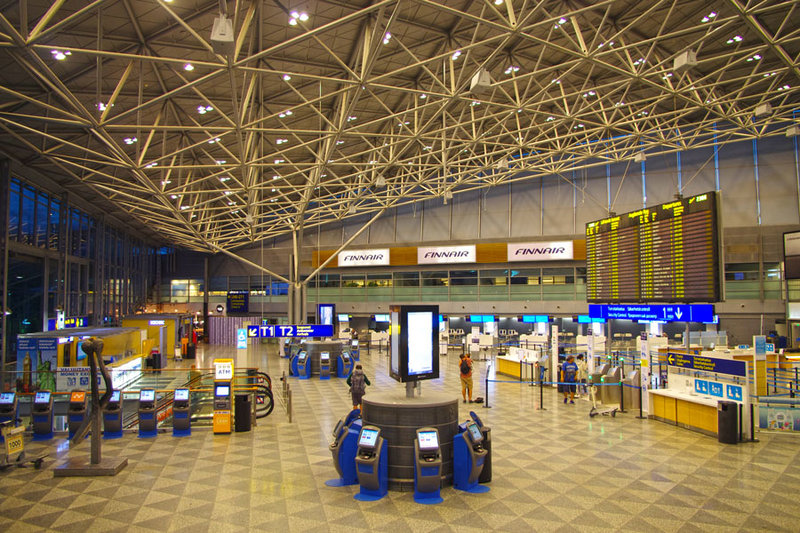Retail
How is digitalisation improving customer feedback at airports?
Growing passenger numbers in an increasingly cosmopolitan world are forcing airports to ensure that travellers are satisfied with services. As customer feedback becomes more and more crucial to reach this goal, Adele Berti explores the way in which digitalisation can offer new ways of gathering and organising data
A
ir travel is enjoying a period of fast, positive growth with around 7.8 billion passengers forecast to fly across European skies in 2036, almost double the figure of travellers expected this year.
As aviation grows, airports fulfil an increasingly central role in a passenger’s travelling experience and are leveraging this by expanding their retail opportunities, renovating obsolete areas and working to improve customer appreciation.
A huge part of their strategy is built around gathering feedback, a practice that continues to give airports a headache as customers’ expectations rise and data-gathering becomes more complex.
Whether used to improve bathroom cleanliness or staff behaviour at security checkpoints, on-site feedback can be crucial to improve an airport’s prestige, and with digitalisation and technology constantly evolving, new opportunities are rising on the horizon.
Image courtesy of HappyOrNot
The end for pen and paper
One thing is certain: the days of hand-written feedback are over. According to Ville Levaniemi, co-founder of terminal feedback generator HappyOrNot, pen-and-paper surveys are no longer feasible for the fast-paced environment typical of an airport. “[A feedback system] needs to be extremely fast, convenient and comfortable,” he explains.
Famous for its recognisable ‘smileys’ – which indicate the degree of satisfaction with a particular service – HappyOrNot serves a number of airports around the world, including Dallas Fort Worth and London Heathrow, where optimising time through digitalisation is key for both passengers and staff.
“Digitalisation is the key to how we operate; I actually considered it when we started working to found the company in 2008. That is one of the reasons why the company was born.”

Image courtesy of
Levaniemi emphasises that access to a large amount of data is crucial for an airport and maintains his system is capable of providing it: “It is all about sharing the information internally to the people who analyse it; we recommend to our customers that the research is shared with passengers though internal screens and social media. Interactivity is quite important, as well as the usability of the system.
“We invested millions in the development of the system and although most of the time, it’ not necessarily something that is visible for the end users, it is more about making analytics valuable for our customers in order to introduce predictive analysis.”
A feedback system needs to be extremely fast, convenient and comfortable
Real-time feedback and artificial intelligence
In the past, HappyOrNot has been criticised over the fact that the feedback it provides is limited to a positive or negative response, effectively not allowing passengers to explain the reasons behind their choices and make suggestions.
However, Levaniemi explains that although less popular, this type of feedback is part of the company’s portfolio with the name of Smiley Touch and has been implemented in specific areas of several airports. “Our clients can set specific options and ask about important KPIs like ‘is the restroom big enough’ or ‘was the cleaning done well?’” he says. “In an open, general area of the airport, they can even ask different things about the airport like security personnel and what solutions are provided. Quite often our customers use both solutions.”
While the Smiley Touch terminal is one of option, Helsinki Airport in Finland is trialling real-time feedback in bathrooms that it claims could change the way surveys are carried.
As part of the trial, which kicked off earlier in June, a number of devices were installed in 19 restrooms across the airport, designed to issue an alarm to the staff when intervention is needed.

Image: futuristman / Shutterstock.com
“The idea is to offer a channel for the passengers to give feedback about the cleanliness of the bathrooms,” says Juhana Arkio, development manager at Finavia, the company responsible for maintaining and developing a range of Finnish airports, including Helsinki.
The pilot project features a device through which users can leave specific feedback around the cleanliness of the premises without even having to touch the screen, which registers the feedback through non-touch infrared sensors. “The system does not only collect feedback and compile a large data bank about passenger behaviour, but it also generates cleaning alarms,” which, Arkio explains, are then sent directly to the mobile devices of the cleaning staff for immediate intervention.
“Alongside the real-time feedback system, the new technology counts the number of visitors to bathrooms,” he continues. “This way, Finavia obtains information about the usage rates of the premises and can define the cleaning routines in a more systematic manner.”
Echoing Levaniemi, he stresses that nowadays, extensive data access is the most valuable tool to gain knowledge on passenger likes and dislikes. The project could help bring this feature to the next level: “We can generate an extensive amount of data about passenger behaviour through the system.
“It is all about digitalisation and people. Once we are able to utilise machine learning and connect desired cleaning quality definitions with long term flight data and passenger behaviour data, we will have an intelligent artificial cleaning adviser in our use.”
We can generate an extensive amount of data about passenger behaviour through the system